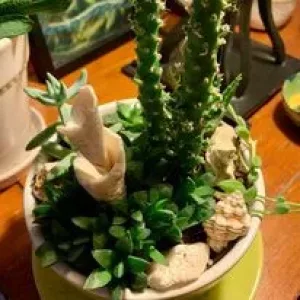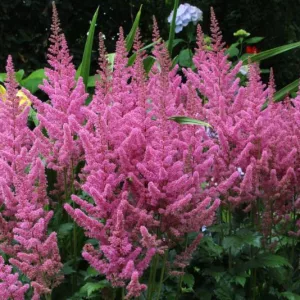As focus shifts from outdoors to inside at this time of year, I really enjoy caring for my indoor plants. Every time I go by one of them, I am checking for dead leaves that must be nipped off or long straggly growth that should be pinched back.
Since I am off today, I have done a thorough check of each plant. My one cactus needs no attention at all throughout the winter. It is quite content to sit in its sunny spot just being.
This group of plants is perfect for the person who don’t like to fuss with plants. Cacti have the unique ability to hoard water in their cells. During dormant times in winter, your plant may only need to water once a month or not at all. A sign that a cactus needs a drink would be if the plant starts to look shriveled or turns an off-colour.
I have a bigger collection of succulent plants. They are more adapt at telling me that water is required. Since succulents hold water in their leaves, if they are plump and tight, no watering is required. However, when the leaves or stems begin to look flaccid or limp, that is a sure sign the plant needs a drink. How often this is necessary over the winter will be determined by the environment they are in.
I get a lot of sun through big south-facing windows during winter. When we do have sunny days instead of grey, my succulents need more water. We also have a wood stove going most of the winter. The air becomes much drier than in spring and summer. As a result, I do have to water my plants more often.
Keep in mind that more cacti and succulents die from being over-watered than under-watered. When your plants do need a drink, be sure to give them a good soak until water runs right out the drainage hole. Then allow the soil to dry out completely before watering again. Their roots and crown rot easily if soil is kept constantly wet.
If your plants have nooks and crannies that can trap moisture you should not water from above. Instead, set the plant in a dish of water to absorb moisture from below. Leave the plant soaking for about 20 minutes and then check it. If the soil surface is wet, it has absorbed all the water it needs. Remove it from the water and allow all excess moisture to drain out the bottom of the pot before you set it back in its spot.
This is also the preferred watering method for all plants with fuzzy foliage. They do not like moisture on their leaves either. When I was at college, I have a wonderful collection of African Violets. I always used this method for watering them.
Keep in mind that African Violets will need watering more often than succulents. They, like many houseplants, need the soil surface to dry out between waters. However, it does stress plants if they repeatedly wilt before re-watering.
I also have several ferns in my indoor plant collection. They are happiest when their soil is kept evenly moist. I make a point of moving them away from the fireplace once we start to use it in the fall. I also check the ferns more frequently for watering. Also, a few times throughout the winter I set them in the shower and give them a thorough, gentle spray with tepid water.
With houseplants being so extremely popular once again, I know many people have large plant collections. For the new plant parents out there, using the internet to search for specific plant care instructions is always a good choice. There are many reputable sites with good information.




